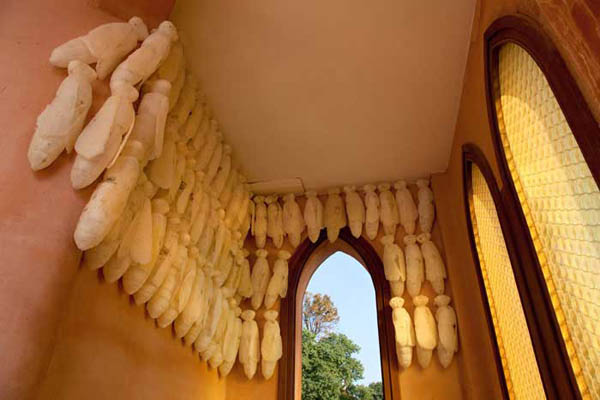
BOLOGNA ACADEMY OF FINE ARTS - ANGELAROSA BENEVENTO
Historically - and it could be said, since its beginning – sculpture interacts with architecture, as it bases its primary significance in its location in space: a space which is a human space, experienced as constructed, and as a human modification of natural space. Only an idealistic misunderstanding, derived from a taxonomic anxiety imposing the separation of the arts, could allow the removal of metopes from temples, and their display, as separate items, in archaeological museums, the aim of which is to conceal their architectonic truth. This applies likewise to the statues that adorned the entrances of the cathedrals of the Western world, often admired in museums as hunting trophies of the big game of modern aesthetic equivocation. But in its union with architecture, sculpture does not suffer at all from subordination, as it tends to decide space, attacking it, revealing it, making it a linguistic entity. So I consider it perfectly reasonable and interesting that current sculptural performances (I wouldn’t say installations, since installation means little more than nothing) like the ones proposed by Angelarosa Benevento, start from the idea that the work of art must insist on its refusal to be an object, an entity apart and detached from the world, to assert itself as a way of activating the relationship between subject (the observer) and place (the environment), a dialectic addition or invasion, capable of establishing the power of a full consciousness to propose to the (pre-existing) space the challenge of a gesture that can revitalise it and make it otherwise perceptible. Power which, in the case presented by the young sculptor at San Servolo, is based on the choice according to which the walls, ceilings, narrow cavities of an ancient bell tower, are affected by a real assault of plastic shapes in silicone glue: simulating bees, insect armies, proposed (also) in a metaphorical key that likens them to members of a vaguely delirious social organization. It is a crowd whose individuals have no ambition to be stylistically appreciated: in fact they are produced in series and almost without any claim to manual dexterity, in the certainty – which is, in my opinion, a sign of maturity of the artist – that the value of a work will no longer be judged according to the requirements of purely formal merit. What matters is the overall effect, or - if you want – the emotional impact that the unexpected presence of dozens and dozens of bees is to produce on the observer’s imagination, through a thoroughly instrumental use of sculptural mimesis. That is, a use in which mimetic adhesion is not intended as a purpose, and in which, consequently, the important thing is not the technical executive aspect (which counts for nothing), but the possibility of generating the a foresaid emotional impact, thanks to a precise linguistic knowledge.
Text by Sandro Sproccati